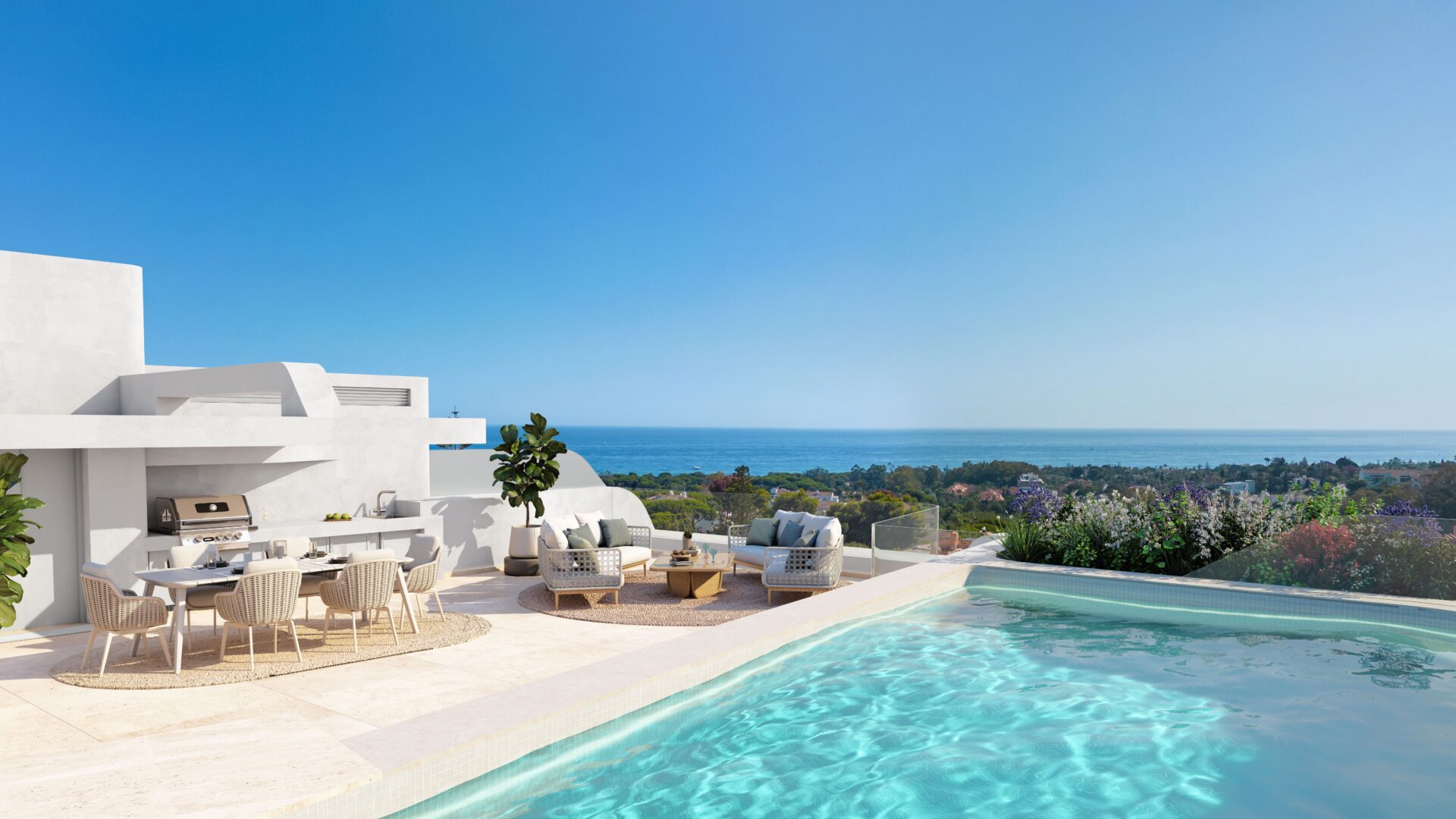For Dutch buyers exploring international property options, Spain and Marbella remain a compelling choice. From its favourable climate to attractive property prices, the Spanish real estate market continues to draw interest from buyers across the Netherlands looking for a lifestyle shift or a long-term investment.
But how does buying property in Spain compare with doing so in the Netherlands? From pricing and taxation to legal structure and lifestyle implications, the two markets operate under very different conditions. Here’s our guide to what you need to know before making the leap.
Property prices and value for money
One of the most immediate differences between Spain and the Netherlands lies in property prices. In many parts of the Netherlands, particularly in cities like Amsterdam, Utrecht and Haarlem, housing prices have soared in recent years. High demand and limited supply have made even modest apartments expensive for many first-time buyers.
In contrast, while prices in prime areas of Marbella such as the Golden Mile or Sierra Blanca are certainly high, they still tend to offer more value per square metre than equivalent properties in Dutch city centres. A spacious three-bedroom apartment with a sea view in Marbella may cost the same as a much smaller flat in central Amsterdam. Add in outdoor space, proximity to the beach and year-round sunshine and the appeal is clear.
Legal process and buyer protection
The legal frameworks in both countries are designed to protect buyers, but the process itself is notably different. In the Netherlands, a notary handles much of the legal work including the transfer of ownership and the process tends to be relatively fast and standardised.
In Spain, the process is more segmented. Buyers typically engage a lawyer to conduct due diligence, ensure that the property is legally registered and free of debts and review contracts before signing. A notary is also involved at the final stage, but legal support is essential from the outset. Spain introduced stronger buyer protection laws after the 2008 financial crisis, including bank guarantees on off-plan purchases, which have added greater confidence to the market.
Taxes and ongoing costs
When comparing the two countries, Spain generally has lower purchase taxes than the Netherlands but may have higher ongoing ownership costs, depending on the region.
In the Netherlands, buyers typically pay a 2% transfer tax on residential properties intended as primary residences, while a 10.4% rate applies to second homes or investment properties.
In Spain, purchase taxes vary by region and property type. In Andalucía, the transfer tax (ITP) on resale properties is a flat 7%. For new-build properties, buyers pay 10% VAT (IVA) plus 1.2% in stamp duty (AJD).
Ongoing costs in Spain include IBI (the local property tax), community fees for shared services such as gardens or pool and non-resident income tax if the property is not rented out. Dutch owners of second homes in Spain should also be aware of Spain’s wealth tax, though high thresholds and regional allowances mean many owners are either exempt or pay minimal amounts.
Financing and mortgages
Dutch banks are usually conservative with lending and strict affordability checks are standard. Spanish lenders typically offer slightly lower loan-to-value ratios to non-resident buyers, usually up to 60 or 70% of the property’s value. Mortgage terms in Spain tend to be shorter and variable interest rates are more common, though fixed-rate options are now widely available.
Spanish mortgage approval can also take longer and may require more documentation than Dutch buyers are used to. Engaging a mortgage broker with experience in cross-border finance can be highly beneficial.
Lifestyle and residency considerations
Beyond the financials, one of the biggest distinctions between owning in Spain and the Netherlands is how the property fits into your lifestyle. In Spain, property ownership is often linked to leisure and quality of life. Whether it is a holiday retreat or a full relocation, owning in Marbella offers more than just bricks and mortar. It provides access to a slower, outdoor-focused, sunlit way of living.
Residency is also relatively straightforward for EU citizens. Dutch nationals can live in Spain without a visa and with proper registration, can access local healthcare and other services. This makes a second home in Spain not only enjoyable but also practical as part of a longer-term relocation plan.
Liquidity and market stability
The Dutch market is tightly regulated, with low supply and high demand supporting strong liquidity, especially in urban areas. Spain’s property market, while recovering strongly since the 2008 downturn, is more fragmented. Liquidity varies by region and properties in sought-after coastal areas like Marbella tend to hold their value well. However, sellers should be prepared for longer sales timelines in some rural or less popular zones.
Buying property in Spain offers Dutch buyers more than a financial investment. It offers a shift in lifestyle, climate and long-term opportunity. Compared with the Netherlands, Spain provides greater value per square metre, a more relaxed pace of life and the appeal of year-round sun.
However, the process requires careful navigation of legal, financial and tax systems that differ significantly from those at home. With the right advice and local expertise, Dutch buyers can approach the Spanish property market with confidence and clarity.
Thinking of making the move? At Luxury Living Marbella, we specialise in helping Dutch clients navigate every step of the Spanish property journey, from selecting the right area to securing legal representation and settling into your new life with ease.
Let us help you turn your property goals into reality.
